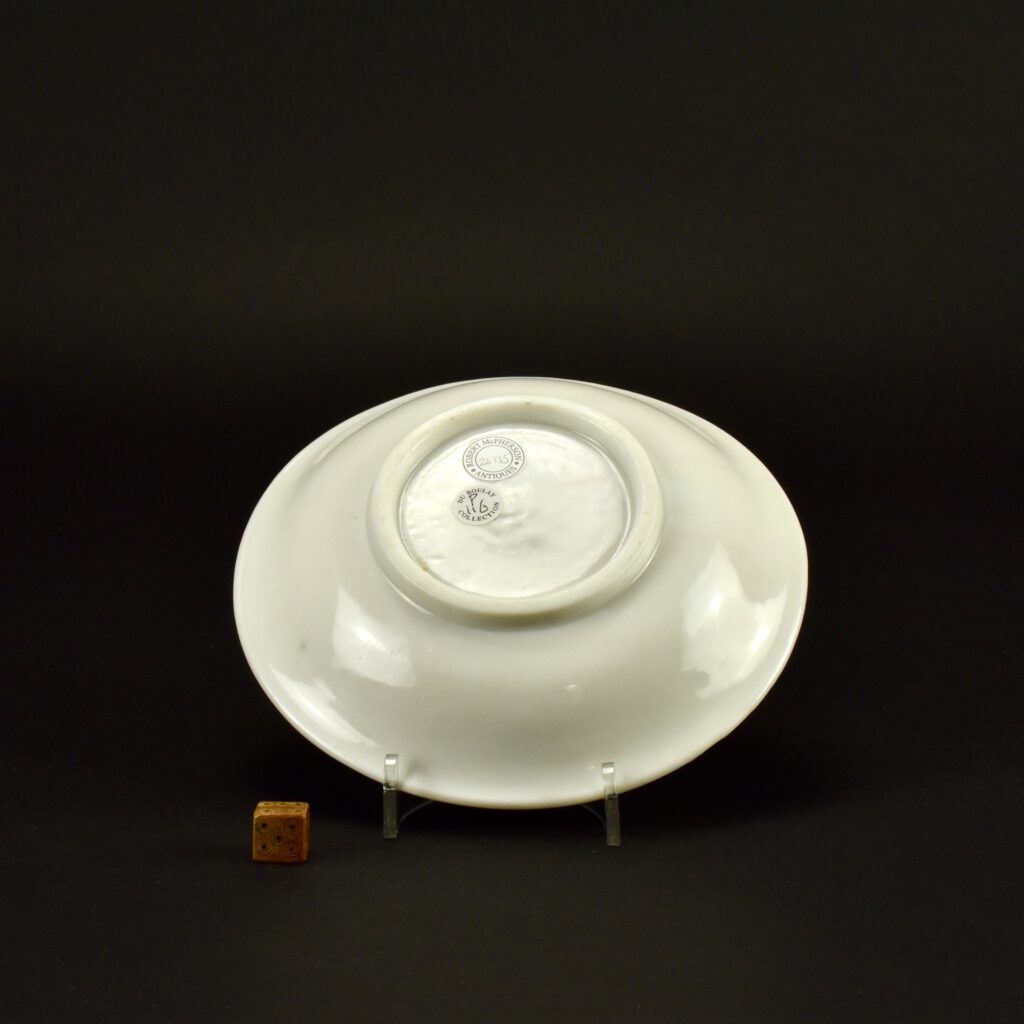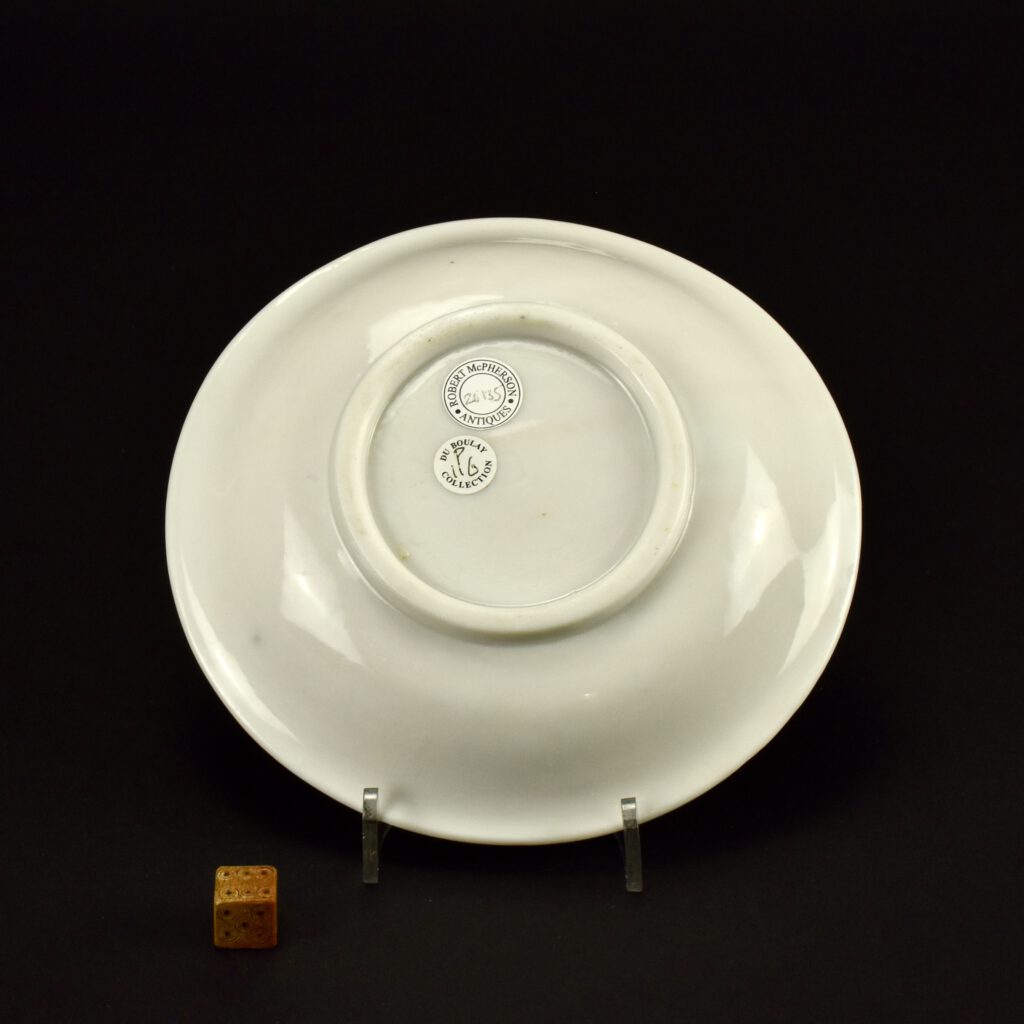
Small Transitional Blanc de Chine Porcelain Saucer Dish
A Small Transitional Blanc de Chine Porcelain Saucer Dish, Late Ming, Chongzhen 1627 – 1644 or Early Qing Shunzhi 1628-1644, Dehua, Fujian Province. This small but very heavy Blanc de Chine dish has thick sides gently thinning outwards. The dish is supported by a broad thick square section foot, the glaze wiped clear of the footrim. The center of the base has a small neat impressed seal-mark. The colour, depending on the light is a pale cream colour (daylight). The porcelain known in the West as Blanc de Chine was produced 300 miles south of the main Chinese kiln complex of Jingdezhen. The term Blanc de Chine refers to the fine grain white porcelain made at the kilns situated near Dehua in the coastal province of Fujian, these kilns also produced other types of porcelain. A rather freely painted blue and white ware, porcelain with brightly coloured `Swatow` type enamels as well as pieces with a brown iron-rich glaze. However it is the white blanc de Chine wares that have made these kilns famous. The quality and colour achieved by the Dehua potters was partly due to the local porcelain stone, it was unusually pure and was used without kaolin being added. This, combined with a low iron content and other chemical factors within the body as well as the glaze, enabled the potters to produce superb ivory-white Blanc de Chine porcelain.
SOLD
Anthony Du Boulay

- Condition
- In very good condition, very light wear. Warped.
- Size
- Diameter 14.6 cm (5 3/4 inches)
- Provenance
- Anthony du Boulay 1929-2022, Christie's 1949-1980; for many years Director of the Ceramics Department and for thirteen years President of Christie's, Geneva; FSA. From 1981, for a number of years Honorary Adviser on Ceramics to the National Trust . He served several terms on council of the Oriental Ceramic Society; also Chairman of the French Porcelain Society and Chairman of the DNHAS (Dorset County Museum).
- Stock number
- 26135
Information












